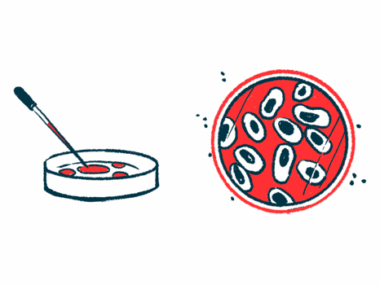Boy with JEB shows distinct skin bacteria 6 years post-transplant
'Unique' skin microbiomes found on patient after gene, stem cell treatment
Written by |

A boy with junctional epidermolysis bullosa (JEB) given combined gene and stem cell treatment in 2015 was found six years later to have a distinctive bacterial population in healthy, blistered, and transplanted portions of his skin, according to a new study from researchers in Germany.
Compared with healthy controls, the boy’s skin microbiome — the collection of microscopic organisms that live on the skin’s surface — was out of balance. High levels of Staphylococcus aureus, or S. aureus for short, a type of bacteria that can cause a wide range of infections, drove most of this imbalance, the researchers noted.
The patient’s skin microbiome also was distinct from those of people with eczema, medically known as atopic dermatitis, another condition affecting the skin.
“Our investigation confirms a unique microbiome composition in JEB, characterized by S. aureus driven bacterial overgrowth,” the researchers wrote. The team added, however, that the boy’s skin “demonstrates stability.”
The study, “Skin microbiome analysis of a junctional epidermolysis bullosa patient treated with genetically modified stem cells,” was published in the JDDG: Journal der Deutschen Dermatologischen Gesellschaft.
Epidermolysis bullosa is a group of disorders in which the skin is very fragile, leading it to easily blister and tear. In JEB, blisters form between the skin’s top layer, known as the epidermis, and a lower layer called the dermis.
Pioneering treatment used in 2015 on then 7-year-old boy
In 2015, researchers and clinicians from the same team as the present study pioneered a new therapeutic option using gene and stem cell treatments. The team performed an experimental skin transplant on a 7-year-old boy with JEB, who had about 80% of his epidermis destroyed.
Specifically, the investigators genetically modified the patient’s stem cells using a viral vector and transplanted them onto wound surfaces.
“Since then, a 5-year follow-up has demonstrated long-term stability of the entire transgenic epidermis, with no recurrence of blistering in the transplanted areas,” the researchers wrote. These results suggested the approach was safe and effective, the team reported in a case study.
However, the impacts of this transgenic transplant on the skin microbiome remain unclear. According to the scientists, the skin microbiome “plays an important role in maintaining skin health, protecting against pathogens [and] regulating the skin’s immune system.” The team noted that it also “is unique to each individual.”
An imbalance of the microbiome, known as dysbiosis, can leave the body more vulnerable to diseases.
Previous studies have demonstrated skin microbiome abnormalities in individuals with EB. Often, S. aureus is present at high numbers, and there is less diversity in skin microbes than in healthy individuals.
Now, the team reexamined the same patient who had received the skin transplant 72 months, or six years, prior, to learn more. Swabs were taken from both healthy (nonblistered) and blistered areas of his unmodified skin, and also from transplanted areas, to identify microbes.
S. aureus was most abundant bacteria species seen on skin
Generally, the blistered and healthy skin showed the greatest differences in microbiome makeup, with transplanted skin falling between these, the data showed. Generally, S. aureus was the most abundant species.
Blistering skin had the highest numbers of S. aureus. In fact, S. aureus was the chief driver of bacterial overgrowth in the blistering skin of this JEB patient, the team noted.
Samples from transplanted skin also had high numbers of S. aureus. However, there were fewer bacteria overall than in blistered skin.
“A reason for general dysbiosis and abundance of S. aureus colonization could be the necessary wound dressings of blistering areas, which often overlap and cover nonblistering areas,” the team wrote, suggesting that “this creates a positive environment for dissemination of S. aureus across the skin surface.”
For comparison, the team also examined skin swabs from healthy people, and from children and adults with atopic dermatitis. These individuals had different microbiome makeups than the JEB patient, the results showed. Specifically, although S. aureus counts were similar in atopic dermatitis lesions and JEB blisters, the bacteria tended to make up a greater proportion of the microbiome in the JEB patient.
Healthy individuals had much lower counts of S. aureus and greater diversity of microbes compared with the boy with JEB.
A reason for … [the] abundance of S. aureus colonization could be the necessary wound dressings of blistering areas, which often overlap and cover nonblistering areas.
Despite the large presence of S. aureus in the transplanted skin, it remained free of blisters and atopic dermatitis, the team also noted.
“These findings confirm the genetic stability of vector-transfected skin regions, indicating sustained resistance to blister recurrence and microbial dysbiosis,” the researchers wrote.
A study limitation was having only one patient who received the transgenic skin transplant procedure, the team noted. The investigators also said that sampling was done only in skin areas where all three tissue types — blistering, non-blistering, and transgenic — coexisted, reducing the overall sample size.
“To confirm our data, independent replicates were performed and showed reliable results. However, intra-individual differences, as well as environmental influences, are possible,” the investigators wrote.
The team suggested continued follow-up of the JEB patient, including monitoring to see if hormonal shifts during adolescence impact skin microbes.







